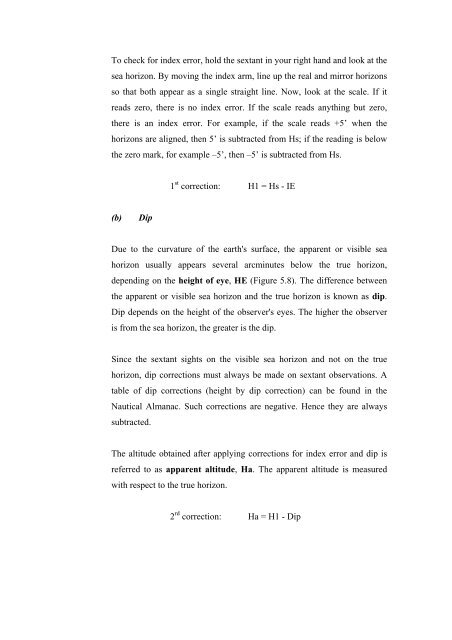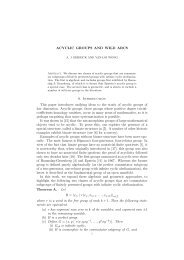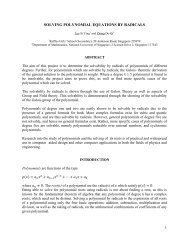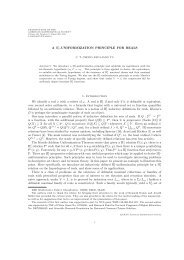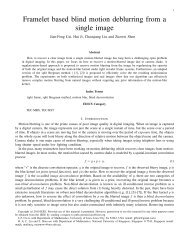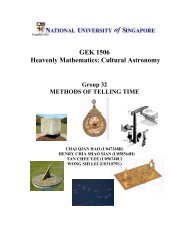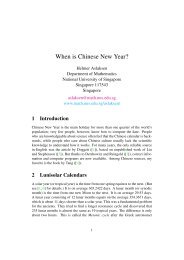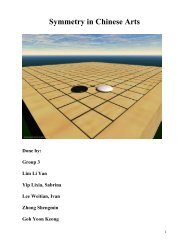The Mathematics of the Longitude - Department of Mathematics
The Mathematics of the Longitude - Department of Mathematics
The Mathematics of the Longitude - Department of Mathematics
You also want an ePaper? Increase the reach of your titles
YUMPU automatically turns print PDFs into web optimized ePapers that Google loves.
To check for index error, hold <strong>the</strong> sextant in your right hand and look at <strong>the</strong><br />
sea horizon. By moving <strong>the</strong> index arm, line up <strong>the</strong> real and mirror horizons<br />
so that both appear as a single straight line. Now, look at <strong>the</strong> scale. If it<br />
reads zero, <strong>the</strong>re is no index error. If <strong>the</strong> scale reads anything but zero,<br />
<strong>the</strong>re is an index error. For example, if <strong>the</strong> scale reads +5’ when <strong>the</strong><br />
horizons are aligned, <strong>the</strong>n 5’ is subtracted from Hs; if <strong>the</strong> reading is below<br />
<strong>the</strong> zero mark, for example –5’, <strong>the</strong>n –5’ is subtracted from Hs.<br />
(b) Dip<br />
1 st correction: H1 = Hs - IE<br />
Due to <strong>the</strong> curvature <strong>of</strong> <strong>the</strong> earth's surface, <strong>the</strong> apparent or visible sea<br />
horizon usually appears several arcminutes below <strong>the</strong> true horizon,<br />
depending on <strong>the</strong> height <strong>of</strong> eye, HE (Figure 5.8). <strong>The</strong> difference between<br />
<strong>the</strong> apparent or visible sea horizon and <strong>the</strong> true horizon is known as dip.<br />
Dip depends on <strong>the</strong> height <strong>of</strong> <strong>the</strong> observer's eyes. <strong>The</strong> higher <strong>the</strong> observer<br />
is from <strong>the</strong> sea horizon, <strong>the</strong> greater is <strong>the</strong> dip.<br />
Since <strong>the</strong> sextant sights on <strong>the</strong> visible sea horizon and not on <strong>the</strong> true<br />
horizon, dip corrections must always be made on sextant observations. A<br />
table <strong>of</strong> dip corrections (height by dip correction) can be found in <strong>the</strong><br />
Nautical Almanac. Such corrections are negative. Hence <strong>the</strong>y are always<br />
subtracted.<br />
<strong>The</strong> altitude obtained after applying corrections for index error and dip is<br />
referred to as apparent altitude, Ha. <strong>The</strong> apparent altitude is measured<br />
with respect to <strong>the</strong> true horizon.<br />
2 rd correction: Ha = H1 - Dip


